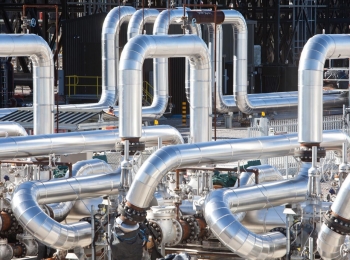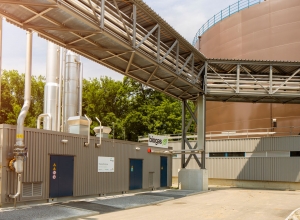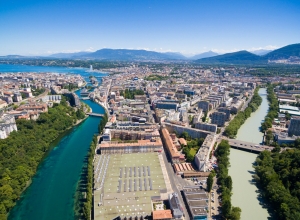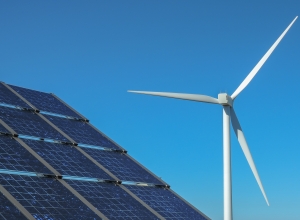Life-cycle environmental impacts of geothermal heating networks in Geneva
Space heating in buildings in the State of Geneva significantly contributes to climate change due to the use of fossil fuels that supply around 87% of the heat demand (DIT, 2020). Recently, the State set an objective to reduce greenhouse gas emissions by 60% in 2030 compared to the level in 1990, and geothermal heating is one of the key solutions (République et canton de Genève, 2020). Geothermal heat from shallow to medium depth, exploited directly or with heat pumps, is expected to grow and cover around 30% of the heating demand in 2050 (République et canton de Genève, 2020). Operated in closed-loop systems, geothermal heating has zero direct carbon emissions, but little is known about its indirect environmental impacts that occur throughout the life cycle.
A life-cycle assessment study carried out by Renewable Energy Systems group at the 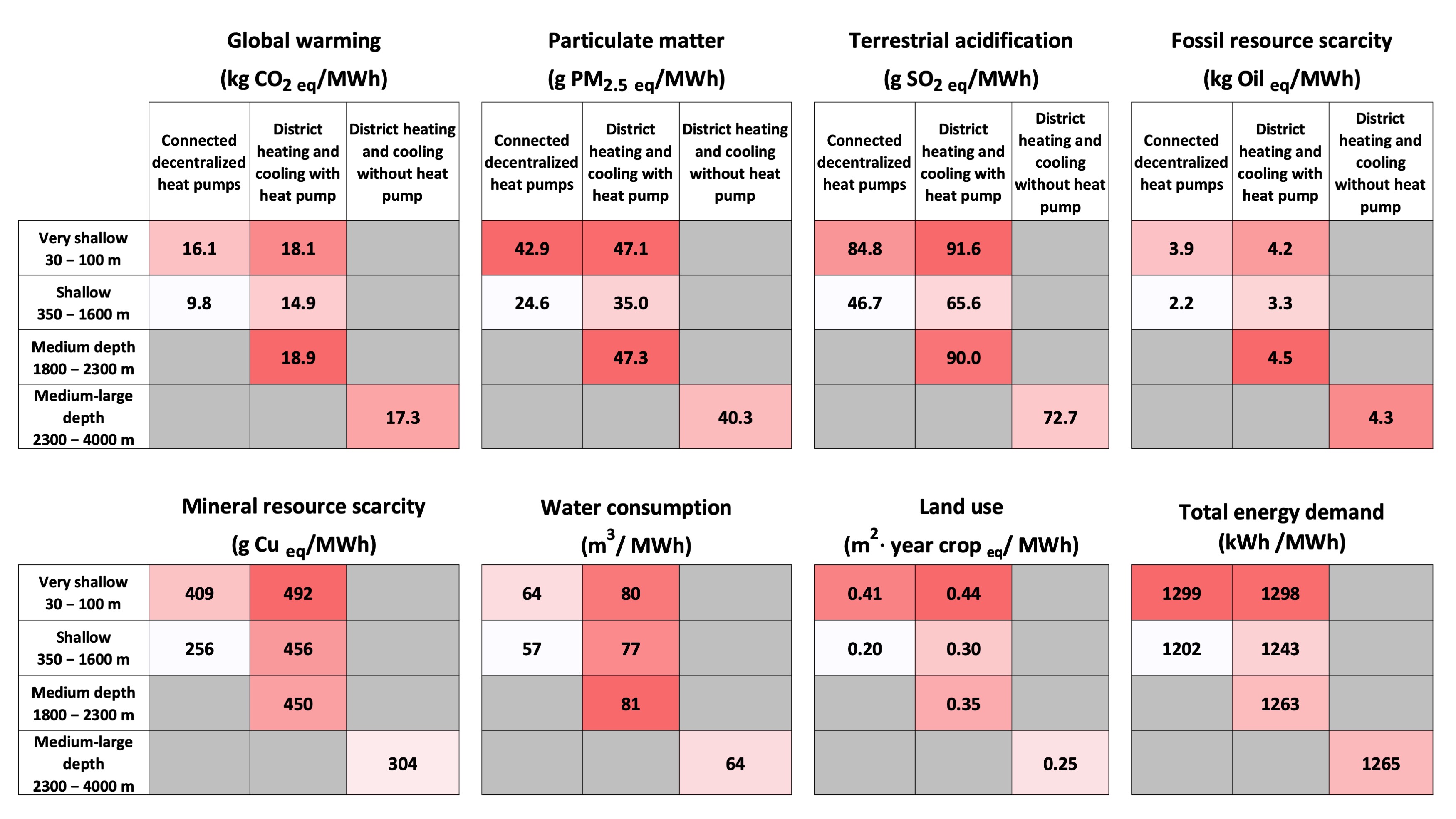
Figure 1 : environmental impacts of the six configurations of geothermal heating networks
Global warming impacts of the analyzed geothermal heating networks in the State of Geneva would amount from 9.8 to 18.9 kg CO2 eq/MWh of heat. These values constitute just 3% to 7% of emissions from individual oil boilers, one of the most common heating sources in the State. Global warming impacts of geothermal heating networks are also lower than those of woody biomass and waste incineration with district heating. Yet, the impacts of geothermal heating are relatively similar to those of other renewable heating sources, such as solar thermal collectors, individual ground source heat pumps and electric heating that use
The impacts of geothermal heating networks on life-cycle air pollution (particulate matter) and land use are also lower than those of individual oil boilers, and, in fact, lower than those of woody biomass. But these impacts of geothermal heating networks are still similar to those of solar thermal collectors, individual ground source heat pumps and electric heating too.
Compared to other renewable energy sources, geothermal heating networks have slightly higher water consumption impacts. Then, geothermal heating networks pose a challenge concerning mineral resource consumption as they consume up to 2.6 times more mineral resources than oil boilers. This is the case for most zero- and low-carbon technologies, including solar thermal collectors or electric heating. In the long term, mineral resource consumption could contribute to global increase in price and vulnerability of the mineral resource supply.
Most of the environmental impacts of geothermal heating networks stem from network pipes, geothermal wells, and the electricity consumed by the heat pumps throughout the lifetime. The lowest environmental impacts are observed in systems that are assisted by heat pumps and are configured in a decentralized way. This means that the heat pumps are installed near the houses instead of near the geothermal wells, allowing the heat network to work at lower distribution temperature, for which plastic-based pipes can be used instead of steel-based ones. Coupling this network with geothermal resource from shallow depth (350–1600 m) will bring the impacts further down because obtaining geothermal resources from such depth requires less energy to drill than in the case of deeper wells. The produced water from this depth (350-1600 m) is also warmer so that less electricity for the heat pump operation is required.
In sum, geothermal district heating networks are suitable options for decarbonizing the heating sector in the State of Geneva and in
[This text is also available in French. The complete publication can be accessed without restrictions here.]
References
DIT (Direction de l'information du territoire de l’État de Genève). Le système d'information du territoire à Genève (SITG) – Indice de dépense de chaleur (IDC) des bâtiments. https://ge.ch/sitg/fiche/0650 (accédé le 1er décembre 2020).
République et canton de Genève. Plan directeur de l'énergie 2020-2030. Genève, 2020.
Astu Pratiwi
Astu Pratiwi est doctorante au sein du groupe Systèmes d’énergies renouvelables. Ses travaux se focalisent sur l’évaluation de la durabilité de réseaux de chaleur géothermiques dans le canton de Genève, en tenant compte de facteurs environnementaux et socio-économiques.
Evelina Trutnevyte
Evelina Trutnevyte est professeure associée à l'Université de Genève et dirige le groupe Systèmes d’énergies renouvelables. Elle est membre du Pôle sciences, thématique Énergie, de l'Institut des sciences de l'environnement. Evelina est une analyste et modélisatrice des systèmes énergétiques. Ses spécialisations sont les systèmes d'énergies renouvelables, les approches socio-techniques de la transition énergétique, ainsi que les questions liées à la prise de décisions en matière d’énergie dans un contexte d'incertitude. Elle a travaillé à l'ETH Zürich, l'University College London (Royaume-Uni), l'Université Carnegie Mellon (États-Unis), ainsi que dans d'autres universités.
